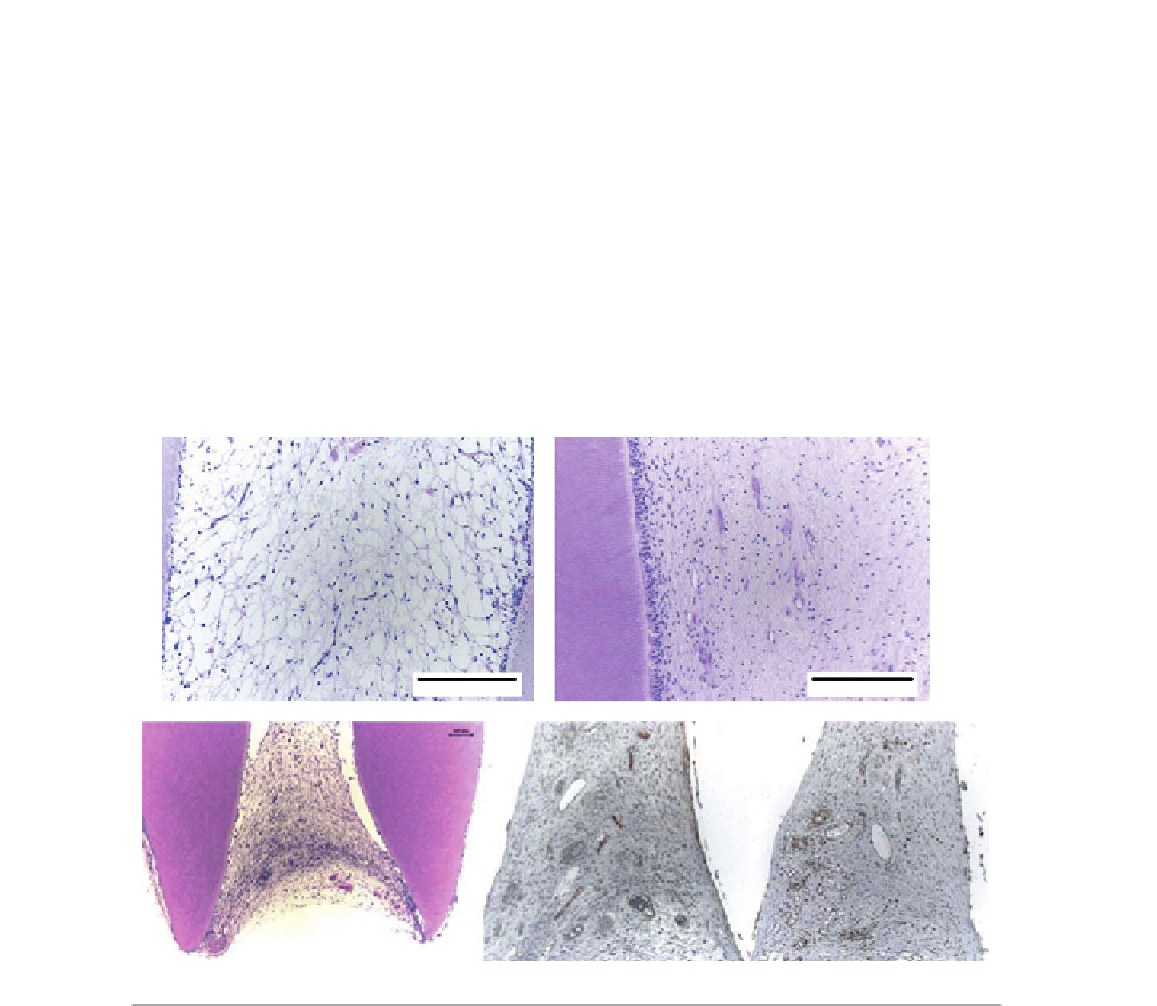Biomedical Engineering Reference
In-Depth Information
health problem and cavities. There is evidence suggesting that odontoblasts (cells that produce den-
tin), dental pulp stem cells (DPSC) and stem cells from human exfoliated deciduous teeth (SHED)
are able to produce pulp/dentin-like tissues when seeded on specific condition or scaffolds
[92
95]
. In the process, advanced biomimetic scaffolding materials are versatile enough to provide
a suitable 3D network to accommodate these cells and guide their growth, organization, and differ-
entiation. One important step toward regenerative endodontics was achieved when SHED mixed
with nanofiber peptide scaffold and injected into full-length root canals were able to generate a
dental pulp.
Figure 20.5
shows the presence of a pulp tissue fulfilling the hollow passageway of the
root canal, with proliferative activity and blood network maturity comparable to the ones observed
in a young human dental pulp
[96]
.
Another in vitro study showed that peptide
amphiphile molecules provide a nanostructured,
cell-responsive matrix that is specifically conducive to dental stem cells. The SHED and DPSC
seeded in PA hydrogels show difference in morphology, proliferation, and differentiation behavior.
(A)
(B)
200
µ
m
200
µ
m
(C)
(D)
(E)
FIGURE 20.5
Dental pulp tissue engineered for 35 days inside root canal using SHED cells (A) and natural dental pulp from
premolar (B). It is possible to observe the formation of a healthy tissue without inflammatory signs and a
densification of odontoblast-like cell along dentin walls in the SHED originated tissue similar to the control.
The engineered tissue occupies the whole apical portion (C) and immunohistochemistry with proliferating cell
nuclear activity and factor VIII show a proliferative tissue with well-established and mature blood network
(D) and (E).
Adapted from Ref.
[96]
. Reprinted with permission from Elsevier.

